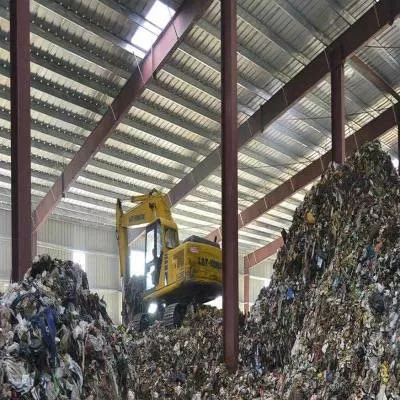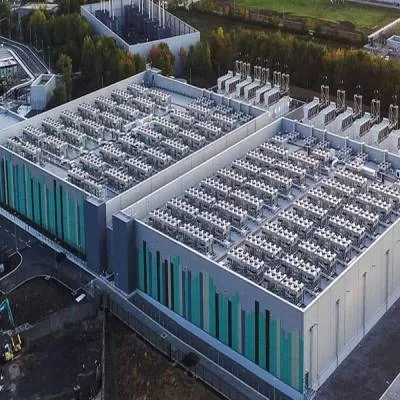- Home
- Technology
- The Nano Route
The Nano Route
Nanotechnology can maximise quality and overcome a host of speed breakers in road construction.
Road transport is a key aspect of the development of any economy. Reduced expenditure on maintenance of existing roads means availability of surplus for incremental infrastructure development. However, limitations of existing technologies are a major concern in the development of roads for heavy traffic and load. What then constitutes good road construction technology? The answer: technology that which prevents stripping of pavements, water-related strength loss and failures such as rutting, fatigue ing or disintegration (potholing). But first, a look at the essentials of road construction:
Critical components of roads
Aggregates are natural resources. They are the real load-bearing materials used in road construction. Natural aggregates come from rocks, and are quite complex to understand or predict behaviours thereof. Even a single rock may give good and poor quality aggregates. Dust coating on aggregates is another problem which causes reverse emulsification of asphalt binders, leading to stripping. Due to non-availability of good aggregates locally, they are transported over long distances.
Asphalt binders are produced by petroleum refineries. Understanding the chemistry and microstructure of asphalt is critical to the development and improvement of performance-based specifications.
Asphalt concrete is the mixture of aggregates and asphalt binders commonly used in the construction of road surfaces, airports and parking lots. Asphalt concrete is produced with HMA, WMA or cold mix. Major issues involved are stripping, ravelling and potholes because water, heavy loads and oxidation of asphalt all affect the appearance of asphalt, which becomes dry, ed, brittle and crumbly. s can erode, allowing water into the sub-base, thus weakening the foundation of the road or driveway.
Nanotechnology as a solution
It's not just a fashionable buzzword; rather, it's a technological breakthrough which addresses stripping problems in asphalt paving mixes. Nanotechnology genuinely delivers value by reducing the material intensity and doing the job at a ‘nano' (10-9m) level. Here's how: Reactive organo-silicon compounds form silanol groups (Si-OH) upon hydrolysis. These silanols are reactive and can form Si-O-Si siloxane bonds with surface silanol groups of inorganic substrates. They bond chemically with the aggregates' surface and eliminate de-bonding of asphalt binders. Reactive organo-silicon does everything that liquid amine or hydrated lime is typically used for, and what's more, does it chemically, by creating Mother Nature's strongest bond - a bond that survives centuries and can never be displaced by water.
Fringe benefits
Nanotechnology for roads has other benefits like increasing tensile strength of asphalt mix by about 15 to 20 per cent, which has the potential to increase its fatigue life (resistance to ing under repeated traffic loading), increasing its Marshall stability to provide increased resistance to rutting while keeping it flexible (maintaining the same flow properties).
Further, organo-silane modified asphalt binder mix is easier to compact, both in the laboratory and on the field. Field compaction is improved by 1 to 1.5 per cent with the same compactive effort, resulting in construction cost savings as well as increased durability of asphalt pavements with reduced air voids. Additive in asphalt also leads to glossier hot mix asphalt, which is silky and easy to flow. This ensures improved workability and easy flow in storage/surge silos, dumper trucks and pavers.
Upon evaluation of the product by different agencies using four standard ASTM or AASHTO test methods that are used worldwide for determining the stripping potential of asphalt mixes, performance was found to be superior as compared to other anti-strip agents.
User-friendliness
Organo-silane is almost odour-free and does not impart any odour to asphalt binders or asphalt. It is non-flammable and safe to handle in HMA plants. Also, it is neutral and does not cause any corrosion.
Last word
Reactive organo-silicon nanotechnology is very effective in eliminating moisture susceptibility as also improving bond strength and compaction, resulting in reduction in maintenance costs and longer pavement life. Surely, a win-win for the industry!
Article courtesy Zydex Industries. Zydex is a pioneer and a leader in Nanotechnology applications for superior roads. For more details contact Zycosoil@zydexindustries.com or visit www.zydexindustries.com
If you have a new and innovative technology to share, email us at feedback@ASAPPmedia.com
Nanotechnology can maximise quality and overcome a host of speed breakers in road construction. Road transport is a key aspect of the development of any economy. Reduced expenditure on maintenance of existing roads means availability of surplus for incremental infrastructure development. However, limitations of existing technologies are a major concern in the development of roads for heavy traffic and load. What then constitutes good road construction technology? The answer: technology that which prevents stripping of pavements, water-related strength loss and failures such as rutting, fatigue ing or disintegration (potholing). But first, a look at the essentials of road construction: Critical components of roads Aggregates are natural resources. They are the real load-bearing materials used in road construction. Natural aggregates come from rocks, and are quite complex to understand or predict behaviours thereof. Even a single rock may give good and poor quality aggregates. Dust coating on aggregates is another problem which causes reverse emulsification of asphalt binders, leading to stripping. Due to non-availability of good aggregates locally, they are transported over long distances. Asphalt binders are produced by petroleum refineries. Understanding the chemistry and microstructure of asphalt is critical to the development and improvement of performance-based specifications. Asphalt concrete is the mixture of aggregates and asphalt binders commonly used in the construction of road surfaces, airports and parking lots. Asphalt concrete is produced with HMA, WMA or cold mix. Major issues involved are stripping, ravelling and potholes because water, heavy loads and oxidation of asphalt all affect the appearance of asphalt, which becomes dry, ed, brittle and crumbly. s can erode, allowing water into the sub-base, thus weakening the foundation of the road or driveway. Nanotechnology as a solution It's not just a fashionable buzzword; rather, it's a technological breakthrough which addresses stripping problems in asphalt paving mixes. Nanotechnology genuinely delivers value by reducing the material intensity and doing the job at a ‘nano' (10-9m) level. Here's how: Reactive organo-silicon compounds form silanol groups (Si-OH) upon hydrolysis. These silanols are reactive and can form Si-O-Si siloxane bonds with surface silanol groups of inorganic substrates. They bond chemically with the aggregates' surface and eliminate de-bonding of asphalt binders. Reactive organo-silicon does everything that liquid amine or hydrated lime is typically used for, and what's more, does it chemically, by creating Mother Nature's strongest bond - a bond that survives centuries and can never be displaced by water. Fringe benefits Nanotechnology for roads has other benefits like increasing tensile strength of asphalt mix by about 15 to 20 per cent, which has the potential to increase its fatigue life (resistance to ing under repeated traffic loading), increasing its Marshall stability to provide increased resistance to rutting while keeping it flexible (maintaining the same flow properties). Further, organo-silane modified asphalt binder mix is easier to compact, both in the laboratory and on the field. Field compaction is improved by 1 to 1.5 per cent with the same compactive effort, resulting in construction cost savings as well as increased durability of asphalt pavements with reduced air voids. Additive in asphalt also leads to glossier hot mix asphalt, which is silky and easy to flow. This ensures improved workability and easy flow in storage/surge silos, dumper trucks and pavers. Upon evaluation of the product by different agencies using four standard ASTM or AASHTO test methods that are used worldwide for determining the stripping potential of asphalt mixes, performance was found to be superior as compared to other anti-strip agents. User-friendliness Organo-silane is almost odour-free and does not impart any odour to asphalt binders or asphalt. It is non-flammable and safe to handle in HMA plants. Also, it is neutral and does not cause any corrosion. Last word Reactive organo-silicon nanotechnology is very effective in eliminating moisture susceptibility as also improving bond strength and compaction, resulting in reduction in maintenance costs and longer pavement life. Surely, a win-win for the industry! Article courtesy Zydex Industries. Zydex is a pioneer and a leader in Nanotechnology applications for superior roads. For more details contact Zycosoil@zydexindustries.com or visit www.zydexindustries.com If you have a new and innovative technology to share, email us at feedback@ASAPPmedia.com
























